A number of Sisyphean games are played out in Kutch every year. Among them, one between water and earth, another between nature and humans, and yet another between hunters and hunted.
Every year, parched Kutch yearns for moisture and the annual monsoon accedes. Nature takes away what it gives with alacrity, leaving the Rann of Kutch blanched with salt and the Banni grasslands with a pint of moisture. Come winter, the White Rann attracts human hordes who flock to the white desert, trampling it with joy – we come for the saline and leave behind the pungent.
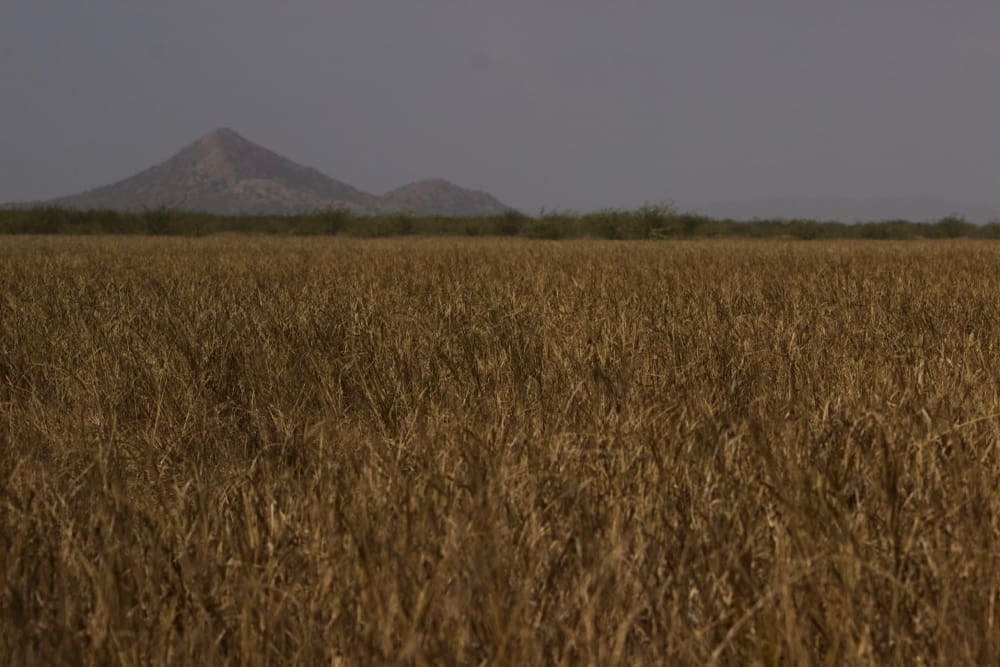
This tug-of-war between nature and humans was out of focus for the Steppe Eagle (Aquila nipalensis) perched on an power line pylon. We were on the road between Nirona and Lorai and we spotted the raptor scanning for prey along the vast expanse of barren land, clumped with grass and dotted with vilayati babul or invasive mesquite (Prosopis juliflora).

On day one at Western Banni, Jugal Tiwari, our host from CEDO (Centre for Desert and Ocean), had initiated us to the lounging raptors and treated us to our most enriching raptor sighting so far. We had started the day with a visit to the village of Fulai to see the Grey Hypocolius (Hypocolius ampelinus), a visitor from Iraq. The agrarian land lined with Meswak or Pilu (Salvadora persica) was the Grey Hypocolius habitat. We were going to shift to a completely different habitat now, one that was becoming sparse in India, the grasslands. We boarded the SUV. Jugal rode shot-gun and to get a similar perspective as his, I took the seat behind him.
I will allude to the image of the delectable Gujarati thali, which I spoke of in the first post of this series (A Whiff of The Rann) to describe the view out of the window. I am curious to ask people what’s the first thing that comes to their mind when they hear Kutch. Responses of rann, salt and dabeli won’t surprise me. It would have been my response as well a few years ago, with perhaps the addition of Kutchi Memons, an affluent community of entrepreneurs now dispersed in Mumbai, Mangalore and Bengaluru.
Kutch is more than rann, salt and dabeli. Scratch the surface and you get sand in your eyes, dig a lot deeper and the epochs reveal themselves to you. Present-day Kutch sits at the crust of land formed by accumulation of layers and layers of earth over the ancient sea bed and is thus rich in fossils.
A lone Long-legged Buzzard (Buteo rufinus), a duo of Kestrels and a trio of Black-shouldered Kites (Elanus axillaris) made for our first sightings from the road and we hadn’t even entered the grasslands yet. We entered Western Banni and were welcomed with sightings of Desert Wheatear (Oenanthe deserti), Isabelline Shrike (Lanius isabellinus), Rufous-tailed Lark (Ammomanes phoenicura), Crested Lark (Galerida cristata), Siberian Stonechat (Saxicola maurus) and Variable Wheatear (Oenanthe picata). Hunters thrive in this prey-rich ecosystem, but the first look at the surface doesn’t betray this.
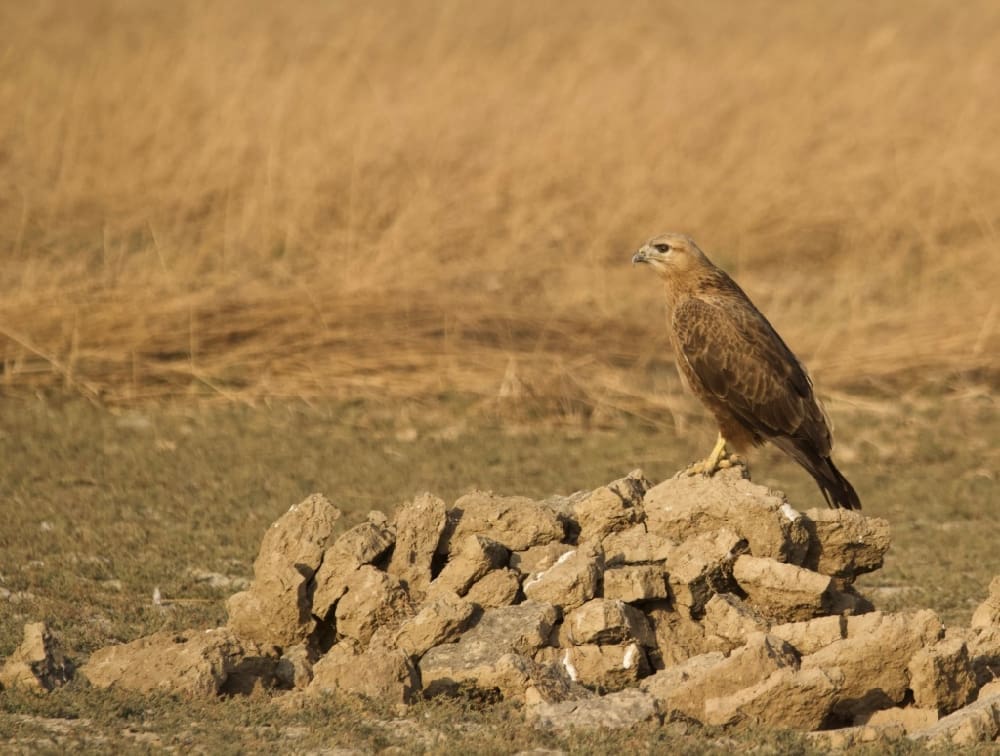
Banni showed up like a relic of an age begone. It exuded art. It expressed patterns. On, above, and below the ground, it had hosted life forms that we had set out to explore. The earth was cracked and arid. The grass yellow and dry. At places, the wind had pressed the tall grass against the ground like a comb run through oiled hair. Burrows on the ground led to the netherworld of Gerbils, Jirds (Meriones hurrianae), Desert Cats (Felis silvestris ornata). Up above was clear blue sky, interrupted by flights of resident and migratory birds. In our forays into the grassland, Banni revealed itself as the metaphorical jackfruit – hard outside, juicy within. At a time when governments are talking about self-sufficient economies, Banni has been one for aeons.

We were on the jeep track, which was the artery in his haven. We navigated patches of grass, thickets of Prosopis juliflora, and oases of watering holes in our quest for birds. In one such babul tree we came across a Steppe Eagle majestically perched at the top. Steppe Eagles are winter migrants to Kutch; they do occasionally come as far south as Mysore and beyond. The experience of sighting the eagle at Banni was different. The flatness of the terrain, and the absence of natural and man-made obstructions, makes it a pleasure to observe raptors undisturbed.
We spent almost three minutes observing the Steppe Eagle before it took off, perhaps bored or hungry. We had many satiating Steppe Eagle sightings throughout our trip — in flight, on babul, on electric pylons, on the ground.
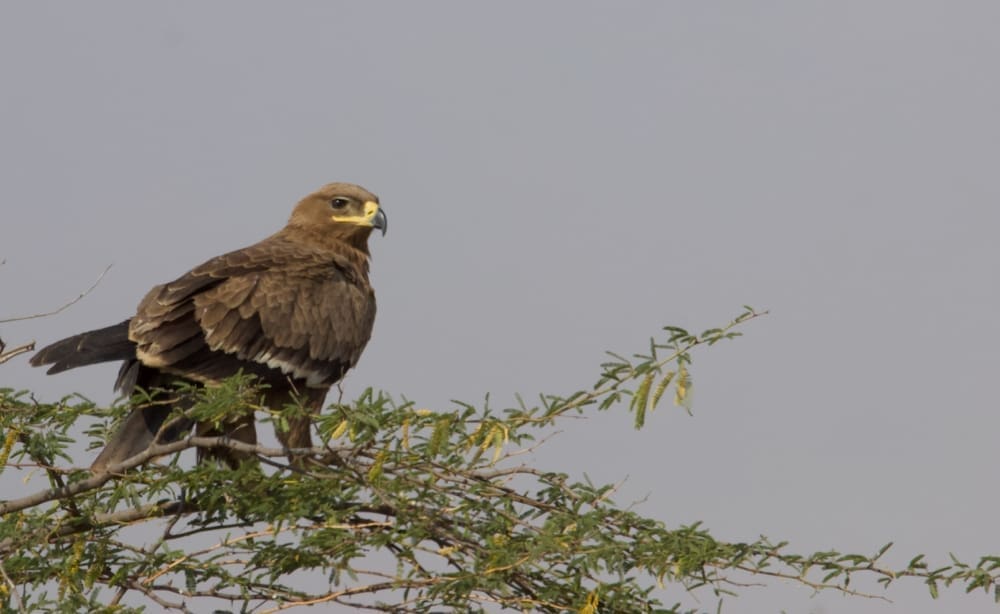
Raptors on the ground were the fascinating part of the trip. I was used to watching raptors soaring high above, perched at a distance, or making a reckless dive to grab prey, before ascending back to the safety of the sky. In Banni I watched raptors at eye level and even below. An Indian Spotted Eagle (Clanga hastata) and a Long-legged Buzzard perched on the ground with a brilliant backlight from the setting sun, and I wondered where they would go to roost once the sun dipped below the horizon.

As the diurnal hunters were winding down, the family of the Indian Eagle Owl (Bubo bengalensis) was preparing to go grocery shopping. Gerbils were on the list, I am sure, as reptiles were off season in the winter. We found the family — an adult pair and a bored juvenile — in the dry undergrowth of a babul tree. A memorable sighting, as we were between the setting sun and the owls facing west. This made for a patient and leisurely sighting, the owls almost motionless like statues, occasionally blinking their flaming orange eyes. Their plumage blended with the dry grey-brown parched earth and that perhaps was the reason for their nonchalance. We left when our presence aroused the curiosity of a group of boys playing cricket nearby, we didn’t want to expose the roosting parents and juvenile owl.
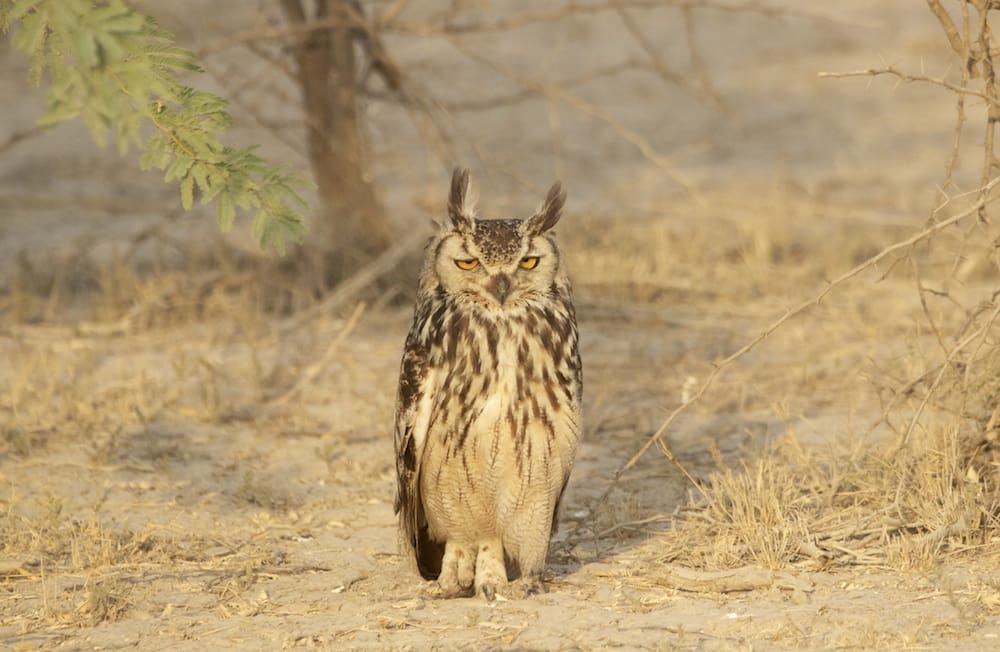
National Highway 341 runs between Bhimsar and Dharmshala Camp, and dissects the Banni grasslands into the eastern and western flanks — Banni East and Banni West. This streak on the ground is immaterial for the birds of Banni, except for the occasional scavenger that dives down to pick up a roadkill and ends up being one. During the trip, I counted about half a dozen birds that became roadkills.

We entered the eastern Banni and were welcomed by a patch of babul. The babul formed just the rampart of the grasslands, past the first file of babul lay pristine grassland. A Maldhari transit encampment lay at a distance, forming a spec within the vastness of Banni. Brightly clad, laid back and unobtrusive, this clan reared buffaloes.
Closer to noon, we chanced upon a Montague’s Harrier (Circus pygargus) in its characteristic unsteady flight — the constant twitch of head from side to side, their delicate wings buffeting like a ribbon on a flag pole and their tails twisting side to side. As I followed the flight of the harrier I chanced upon a hovering Black-shouldered Kite. The was an evident contrast between the two. The kite evinced focus, poise and control, with its steady head, coordinated wing-beats and fanned-out tail. Focus, poise and control do not suffice for being a successful hunter, it appears, for the kite’s quarry slipped away. As the kite retreated a female Pallid Harrier (Circus macrourus) appeared in the scene mocking me for judging the Harrier’s hunting competence by its mercurial flight.
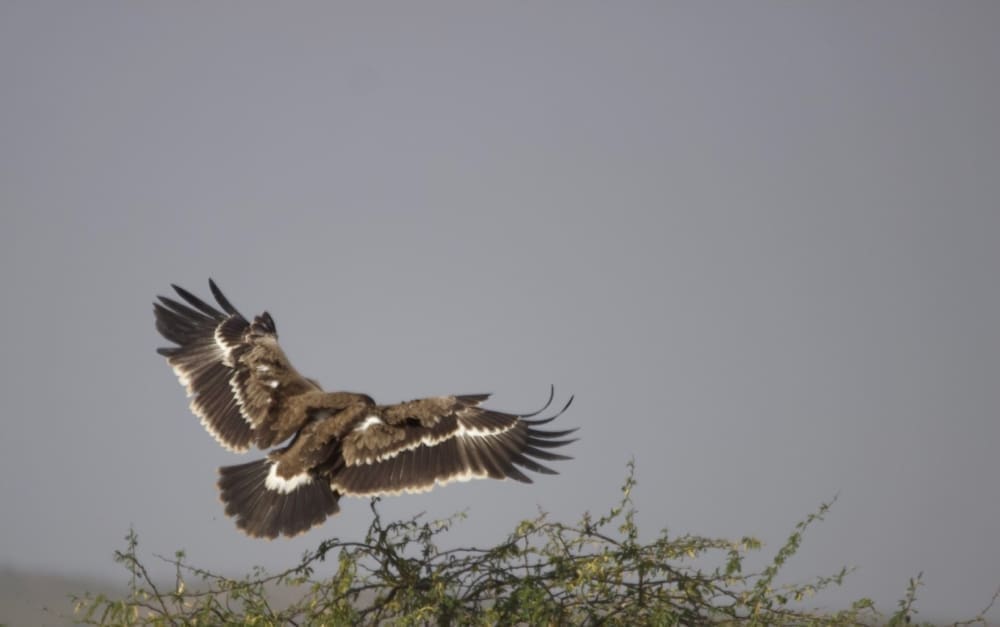
These two along with the Western Marsh Harrier (Circus aeruginosus), which we spotted when we stopped for a cup of tea and packed kachoris in Chari Dhand lake, completed the harrier triad for this trip. Looking at the red setting sun, we poured tea into steel cups.
Dalmatian Pelicans appeared as dark silhouettes in the foreground. The cool breeze picked up and deepened the tranquility of the scene. The Black-shouldered Kite’s retreat, the Montague’s Harrier’s fruitless sortie, and the idling Long-legged Buzzard on the ground showed us that hunters too have to earn their meal. I said a prayer of gratitude for the timely snacks, served on a platter with the proverbial silver spoon. At a distance I heard a Grey Francolin call, perhaps mocking me for my humility for an “easy meal”.
The battle between man and nature is once of dominance with irreversible results. Compare this to the the battle between the hunter and the hunted, which is one of balance. A see-saw in nature’s playground, an evenly balanced battle with a sole purpose of regeneration.
- Kutch Diaries – Spying on the elusive Desert Cat - June 10, 2020
- Kutch Diaries: Up close with the raptors of Banni - May 24, 2020
- Kutch Diaries – Going Waku Waku with Sandgrouse in Banni - April 29, 2020

In this lockdown, I sat on the shoulders of the green ogre for a trip to watch the raptors of Banni! I could almost feel the bristles of yellow grass and the raptors on the vilayati babool. Thank you Andy for a riveting trip through east & west Banni.
Hi Amol,
Thank you and glad you enjoyed this blog post. Our readers and their feedback give us wings. We have more posts coming up in the Kutch series, on the Desert Cat, White Naped Tit, Stoliczka’s Bushchat and Mandvi Beach. Look forward to you joining us for those reminiscences as well.
Excellent article. I thoroughly enjoyed it.
I have a minor suggestion as I am skeptical about the sighting of Spot-billed Pelican. I suggest you to reconsider this identification, possibilities of Dalmatian Pelican is much higher. You may check with Mr Tiwari, as he is a very genuine and expert birder so he may help you in identification.
Hi Devesh,
Glad you enjoyed this blog post. We have more posts coming up in the Kutch series, on the Desert Cat, White Naped Tit, Stoliczka’s Bushchat and Mandvi Beach. Hope you continue to visit our blog and share your comments.
Thank you for your accurate observation on the pelicans, indeed my notes indicate only Dalmatian Pelicans.
We had a rich experience during our trip thanks to Mr Jugal’s immense experience and vast knowledge on the flora, fauna, geography and culture of the region.